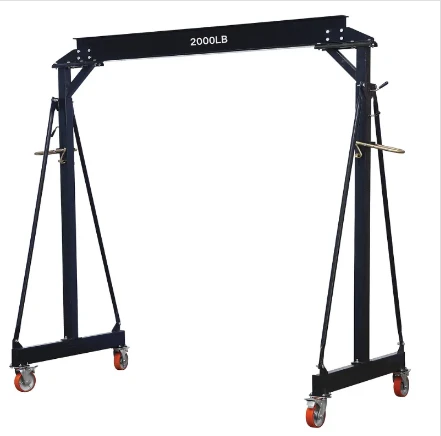Understanding the Cost Factors of Gantry Crane Acquisition and Operation
Understanding the Costs of Gantry Cranes
Gantry cranes are essential equipment in a wide array of industries, ranging from shipping and construction to manufacturing and warehousing. They are utilized to lift and move heavy loads efficiently, often in outdoor and indoor settings. However, the cost of gantry cranes can vary significantly based on various factors, and understanding these costs is vital for businesses looking to enhance their operational efficiency.
Types of Gantry Cranes
Before delving into the costs, it's essential to distinguish between the different types of gantry cranes available. Generally, gantry cranes can be categorized into two major types full gantry cranes and semi-gantry cranes.
1. Full Gantry Cranes These cranes have two legs that move on wheels or tracks along the ground. They provide excellent stability and are ideal for heavy lifting. Full gantry cranes are typically more expensive due to their robust design and greater lift capacity.
2. Semi-Gantry Cranes These cranes consist of one leg that moves on wheels or tracks with the other leg fixed to a support structure. Semi-gantry cranes can be more economical, but they offer less flexibility than full gantry cranes.
Factors Influencing Gantry Crane Costs
Several factors influence the overall cost of gantry cranes, including
1. Capacity and Size The lifting capacity and size of the crane are among the most significant factors affecting the price. Higher capacity cranes capable of lifting heavier loads tend to cost more. It’s essential to assess the load requirements of your operations to select the appropriate type of crane that fits your budget and needs.
2. Material and Construction Gantry cranes are typically constructed from steel or aluminum, with steel cranes being more durable and suitable for heavy-duty applications. Aluminum cranes, while lighter and easier to maneuver, are often used for lighter loads, which can reduce their cost.
gantry crane cost

3. Design and Features Some gantry cranes come with additional features such as electric hoists, adjustable heights, and custom designs. These enhancements can increase the cost but are often worth the investment for improved efficiency and versatility.
4. Manufacturer and Brand The reputation and reliability of the manufacturer also play a crucial role in the pricing. Well-known brands with proven track records may charge a premium, but they often provide better quality, service, and warranty options.
5. Transportation and Installation The logistics of transporting and installing a gantry crane can add to the overall costs. Consideration must be given to site preparation, which may require specific adjustments to accommodate the crane's operational requirements.
Average Cost Estimates
On average, the cost of gantry cranes can range significantly. For instance, light-duty portable gantry cranes can start from as low as $1,000 to $3,000. In contrast, heavy-duty models suitable for industrial use can range from $15,000 to over $100,000, depending on specifications and customizations.
Operating and Maintenance Costs
In addition to the initial purchase cost, businesses should also factor in ongoing operating and maintenance costs. Regular maintenance is essential to ensure safety and longevity, which may include inspections, lubrication, and repair services. Furthermore, training for operators to use the cranes safely and efficiently adds to the total cost.
Conclusion
Investing in a gantry crane can significantly enhance operational efficiency, but it requires careful consideration of various factors impacting the cost. By assessing your specific needs and understanding the different types of gantry cranes available, you can make an informed decision that balances budget and functionality. Whether opting for a lightweight portable model or a robust industrial crane, the key is to ensure that your investment aligns with your operational goals and safety standards.
-
The Power of Trolley Cargo and Machinery Moving SolutionsNewsAug.22,2025
-
Exploring Magnetic Lifting Devices for Efficient Steel Plate HandlingNewsAug.22,2025
-
The Essential Guide to Portal CraneNewsAug.22,2025
-
Enhancing Efficiency in Permanent Magnetic LiftersNewsAug.22,2025
-
Heavy-Duty Machinery Movers and Material Handling SolutionsNewsAug.22,2025
-
The Comprehensive Guide to Adjustable Gantry CranesNewsAug.22,2025
-
The Ultimate Guide to Heavy Machinery Moving EquipmentNewsAug.04,2025
